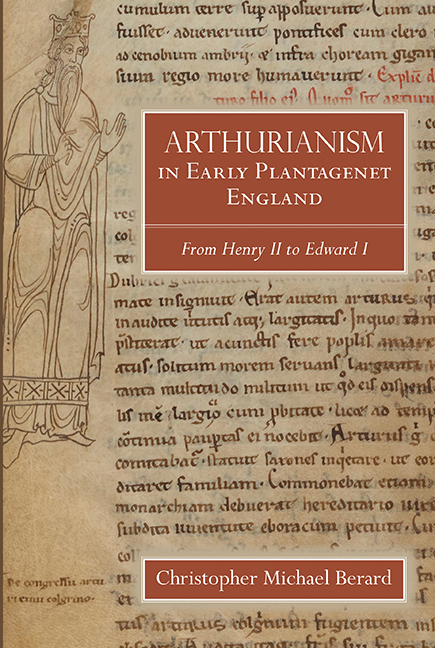Book contents
- Frontmatter
- Contents
- List of abbreviations
- Genealogical Table of the Sovereigns of England from William I to Edward II
- Introduction
- 1 Arthurianism during the reign of Henry II, 1154–1189
- 2 Arthurianism during the reign of Richard I, 1189–1199
- 3 Arthurianism during the reign of King John, 1199–1216
- 4 Arthurianism during the reign of Henry III, 1216–1272
- 5 Arthurianism during the reign of Edward I, 1272–1307
- Conclusion
- Bibliography
- Acknowledgments
- Index
- Miscellaneous Frontmatter
4 - Arthurianism during the reign of Henry III, 1216–1272
Published online by Cambridge University Press: 25 March 2020
- Frontmatter
- Contents
- List of abbreviations
- Genealogical Table of the Sovereigns of England from William I to Edward II
- Introduction
- 1 Arthurianism during the reign of Henry II, 1154–1189
- 2 Arthurianism during the reign of Richard I, 1189–1199
- 3 Arthurianism during the reign of King John, 1199–1216
- 4 Arthurianism during the reign of Henry III, 1216–1272
- 5 Arthurianism during the reign of Edward I, 1272–1307
- Conclusion
- Bibliography
- Acknowledgments
- Index
- Miscellaneous Frontmatter
Summary
Royal ambivalence to Arthur in an era of Arthurianism
Arthur of Brittany's death did not preclude Henry III from fashioning himself after King Arthur as it had King John. Henry III's lack of Arthurian distinction is more attributable to his dearth of charisma and chivalric aptitude. Henry lives on in historical memory as a monkish and dithering monarch. This ‘re de la semplice vita’ (king of the simple life), as Dante refers to him, was not manifestly opposed to Arthur but preferred the example of his canonized royal predecessors, particularly St. Edward the Confessor. Henry's preferences are evident from the artistic and architectural works he commissioned. Henry III stands out not as a warrior king, nor as a great lawgiver, but as a castle-builder and patron of the arts who was personally involved in the interior design of the Palace Complex at Westminster, the processional gateway into the Tower of London, and the Great Hall of Winchester Castle.
With one possible exception that will be considered later in this chapter, Henry III is not known to have commissioned Arthurian art. This is a conspicuous absence and suggests that Henry III was not overly interested in Arthur. Most of Henry's commissions were images of traditional Christian scenes and iconography. Henry also commissioned many depictions of Edward the Confessor. In terms of non-religious subjects, Henry favored the adventures of the Third Crusade and Richard I's duel with Saladin. Henry chose this theme for his royal chamber at Clarendon (2 July 1251) and for a chamber in the Tower of London (1251). The fondness for Richard I at the royal court is logical. Richard was the most distinguished king of England of recent memory and an internationally renowned crusader. Richard's example, together with that of Edward the Confessor, communicated the eminence and sacrality of the Plantagenet bloodline. Henry III also commissioned two pictorial projects involving Alexander the Great. At Clarendon, there was a Chamber of Alexander. It is first mentioned in a document from 1237. Henry also had the history of Alexander painted in the queen's chamber at Nottingham Castle (15 January 1252). Given this imagery, it is curious that we do not have record of any Arthurian pictorial projects commissioned by Henry III.
- Type
- Chapter
- Information
- Arthurianism in Early Plantagenet EnglandFrom Henry II to Edward I, pp. 175 - 214Publisher: Boydell & BrewerPrint publication year: 2019

